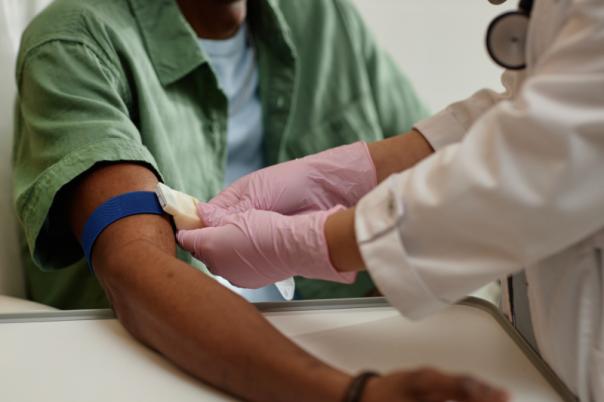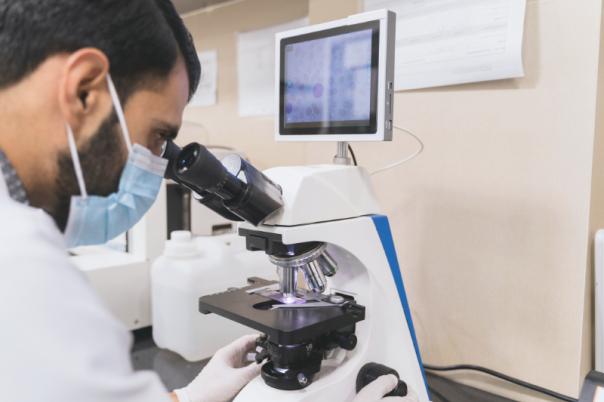Key Takeaways
-
Plan early, collaborate widely: Successful biomarker translation requires early integration of regulatory strategy, clinical design, and patient input—no step can happen in isolation.
-
Patients are partners, not participants: Engaging patients from the start builds trust, improves trial design, and ensures research addresses real clinical needs.
-
Simplicity and communication drive impact: The most effective biomarkers are reliable, transparent, and clearly explained—science moves faster when it’s understandable and useful at the bedside.
What does it truly take to move a scientific discovery into clinical care?
At a recent European panel discussion on “Translating Biomarkers from Bench to Bedside,” experts from academia, biotechnology, regulation, and clinical research gathered to explore this enduring question. What unfolded was an open, pragmatic dialogue about the opportunities, barriers, and lessons that define modern translational medicine.
Each panellist was invited to share their vision for the future of the field in a single sentence. Their responses revealed a collective ambition: to bridge the gap between research and treatment while keeping the patient at the center of every decision.
Dreams ranged from building connected learning healthcare systems that continuously evolve through shared real-world data, to advancing predictive and preventive medicine through harmonised diagnostics. Others emphasised early detection—catching disease before irreversible complications occur—and reducing the regulatory and operational hurdles that often slow innovation.
Designing Better Clinical Trials
A central theme of the discussion was how to design clinical trials that make meaningful and efficient use of biomarkers. Several speakers highlighted that biomarker strategy must be embedded from the outset, not added later. Every sample collected from a patient, they argued, should have a clear and justified purpose.
Invasive procedures such as biopsies can deter participation, so researchers must communicate transparently why each sample matters. Success depends not only on sound science but also on robust, validated assays and clear communication with participants. As one panelist cautioned, “You only get one shot.”
Others pointed out that what works in research does not always translate easily into the clinic. In exploratory studies, researchers may rely on multiple image-analysis algorithms or experimental pipelines. In clinical trials, by contrast, a single validated algorithm is required—one capable of handling real-world variability under regulatory scrutiny. The message was clear: clinical research demands a delicate balance between scientific innovation, patient comfort, and compliance.
Regulation: The Hidden Hurdle
Regulation emerged as one of the most underestimated challenges in translational science. Experts noted that enthusiasm for scientific discovery often collides with the complexity of medical regulation once trials begin.
If a biomarker determines patient eligibility for a treatment or stratification within a trial, it may be considered a medical device under European or UK law—triggering a full regulatory process. Too often, teams realize this only at the recruitment stage, resulting in significant delays. The consensus was that regulatory strategy should be established before the first patient is enrolled. Early planning, speakers stressed, is not bureaucracy—it is essential risk management.
The Role of Patients: Partners, Not Subjects
One of the most compelling moments came when discussion turned to patient engagement. The panel agreed that patients should no longer be viewed solely as research subjects but as partners in the design and execution of studies.
Involving patients early—through advocacy groups, advisory boards, and review of consent materials—leads to clearer communication, more practical study designs, and stronger trust. Several participants shared personal experiences underscoring why this shift matters. For families affected by serious illness, clinical trials are not abstract scientific exercises—they represent hope. Recognising this human dimension transforms the way studies are conceived and conducted.
Academia and Industry: Bridging the Cultural Divide
The dialogue also exposed a persistent cultural gap between academia and industry. Academic researchers are often tasked with producing real-world impact but receive little formal training in regulation, commercialisation, or product development.
To address this, some institutions are embedding “valorisation” into their research frameworks—ensuring that discoveries are accompanied by regulatory, clinical, and partnership components. Industry participants echoed the importance of realism, noting that many startups underestimate the time and cost required to bring a diagnostic to market. Expectations of rapid regulatory approval, they cautioned, rarely align with the realities of complex validation and compliance processes.
The Intellectual Property Dilemma
Intellectual property (IP) sparked lively debate. While investors continue to view IP as a vital defensive asset, panelists agreed that in diagnostics, execution often outweighs patent strength. Companies succeed not because of their patents, but because they identify the right clinical niche and deliver solutions effectively.
For digital biomarkers and AI-based diagnostics, the landscape is even more complex. Algorithms are difficult to patent, and opaque “black box” models challenge regulatory demands for transparency and explainability. Balancing proprietary protection with accountability and interpretability remains a pressing challenge for the field.
Simplify, Collaborate, Communicate
When asked to name the single most important ingredient for successful biomarker translation, the panelists’ answers were refreshingly human:
- Tenacity: The journey is long, uncertain, and requires resilience.
- Collaboration: No single discipline can navigate it alone.
- Simplicity: The best biomarkers are not the most complex, but the ones that work reliably in practice.
- Patient usefulness: True value lies in improving care and decision-making at the bedside.
An audience member concluded with a reminder that resonated deeply: scientists must become better storytellers. “We are achieving extraordinary things,” they said. “Let’s make sure the public understands it.”
Translational Medicine Is a Team Sport
The discussion underscored a single truth: moving a biomarker from discovery to application is not merely a scientific endeavor—it is a collective one. Progress depends on trust and communication between researchers, clinicians, regulators, industry, and patients alike.
Translational medicine, at its heart, is about connection. Only when academic insight, clinical need, regulatory integrity, and patient experience align can discovery truly make the journey from bench to bedside.








